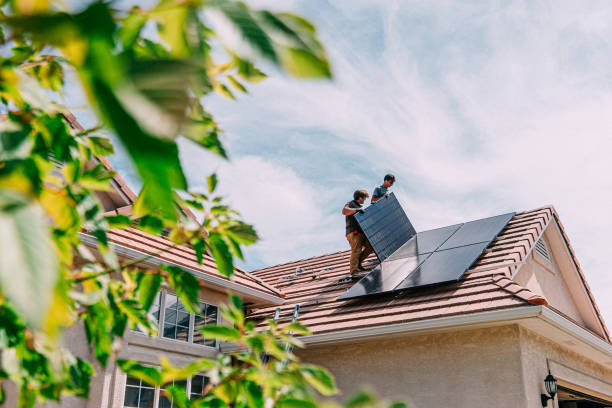Solar Systems & Panels Guide for Australian Homes
Solar energy has become increasingly popular across Australia, with thousands of households making the switch to renewable energy each year. Understanding solar systems and panels can help homeowners make informed decisions about adopting this sustainable technology. From residential installations to commercial applications, solar energy solutions offer numerous benefits including reduced electricity bills, environmental sustainability, and energy independence for Australian properties.

How Solar Panel Installation Works
Solar panel installation involves several key steps that qualified technicians follow to ensure optimal system performance. The process begins with a site assessment where professionals evaluate roof condition, orientation, and shading to determine the most suitable panel placement. Installation teams then mount the panels securely to the roof structure, connect the electrical components, and integrate the system with the existing electrical infrastructure.
Professional installers typically complete residential solar panel installation within one to three days, depending on system size and complexity. The installation process includes mounting rails, securing panels, connecting inverters, and installing monitoring systems. Proper installation ensures maximum energy output and system longevity, making it essential to work with certified professionals who understand local building codes and safety requirements.
Understanding Solar Energy Solutions
Solar energy solutions encompass various components working together to convert sunlight into usable electricity. The main elements include photovoltaic panels, inverters, mounting systems, and monitoring equipment. Photovoltaic cells within the panels capture sunlight and convert it into direct current electricity, which inverters then transform into alternating current suitable for household use.
Modern solar energy solutions often include battery storage options, allowing homeowners to store excess energy for use during evening hours or cloudy days. Smart monitoring systems provide real-time data about energy production and consumption, helping users optimize their solar investment. Grid-connected systems enable households to sell excess electricity back to utility companies through feed-in tariffs, creating additional financial benefits.
Green Energy Australia Initiatives
Green energy Australia initiatives have significantly boosted solar adoption through various government programs and incentives. The Small-scale Renewable Energy Scheme provides financial support through Small-scale Technology Certificates, reducing upfront installation costs for eligible households. State-specific programs offer additional rebates and financing options, making solar systems more accessible to Australian families.
Australia’s renewable energy sector continues expanding, with solar playing a crucial role in achieving national sustainability goals. Government initiatives support both residential and commercial solar installations, encouraging businesses and homeowners to participate in the transition toward clean energy. These programs often include technical support, quality assurance measures, and ongoing monitoring to ensure successful implementation across diverse Australian communities.
Comparing Solar System Providers and Costs
Several established providers offer solar systems and installation services across Australia, each with different pricing structures and service offerings. The following comparison provides insight into typical market options and associated costs for residential solar installations.
| Provider Category | System Size | Estimated Cost Range | Key Features |
|---|---|---|---|
| Premium Installers | 5kW-10kW | $5,000-$15,000 | High-efficiency panels, extended warranties, premium components |
| Mid-Range Providers | 3kW-8kW | $3,500-$10,000 | Quality panels, standard warranties, professional installation |
| Budget Options | 3kW-6kW | $2,500-$7,000 | Basic panels, shorter warranties, competitive pricing |
| Commercial Systems | 10kW+ | $8,000-$25,000+ | Industrial-grade equipment, scalable solutions, business warranties |
Prices, rates, or cost estimates mentioned in this article are based on the latest available information but may change over time. Independent research is advised before making financial decisions.
Maintenance and Performance Optimization
Solar systems require minimal maintenance but benefit from regular monitoring and occasional cleaning to maintain peak performance. Most panels come with 20-25 year warranties and can operate efficiently for decades with proper care. Regular inspection of mounting hardware, electrical connections, and inverter performance helps identify potential issues before they impact system output.
Performance optimization involves monitoring energy production patterns and addressing factors that might reduce efficiency. This includes removing debris from panels, trimming vegetation that creates shading, and ensuring proper ventilation around system components. Many modern installations include automated monitoring that alerts homeowners to performance issues, making maintenance more convenient and effective.
Solar systems and panels represent a significant investment in sustainable energy that can provide decades of clean electricity for Australian homes and businesses. With proper installation, regular maintenance, and quality components, solar energy solutions offer reliable performance and substantial long-term savings. As technology continues advancing and government incentives remain available, solar adoption becomes increasingly attractive for environmentally conscious consumers seeking energy independence and reduced utility costs.




